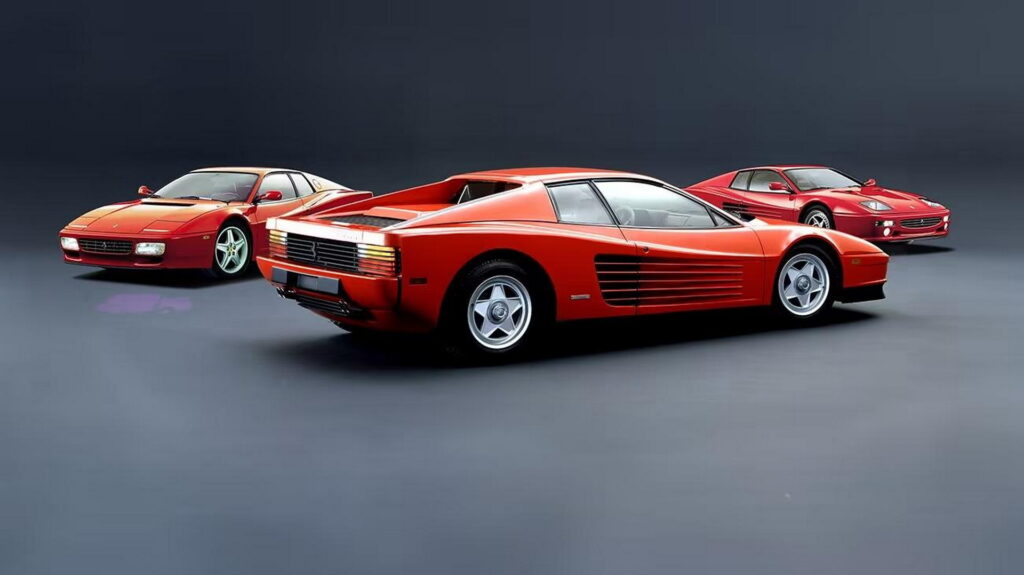
- Ferrari won back rights to Testarossa name after legal battle that lasted nearly 10 years.
- EU General Court ruled legacy brands retain trademarks even without ongoing production.
- This allows heritage IP to be protected and monetized through secondary markets and licensing.
Ferrari just secured a significant legal win, not only for itself but for a range of legacy brands. After nearly a decade of legal back-and-forth over the Red Head, the name is officially back where it started: in Maranello. The shift came after the European Union’s General Court overturned earlier decisions. It’s a move that could ripple well beyond the auto industry.
var adpushup = window.adpushup = window.adpushup || {que:[]};
adpushup.que.push(function() {
if (adpushup.config.platform !== “DESKTOP”){
adpushup.triggerAd(“0f7e3106-c4d6-4db4-8135-c508879a76f8”);
} else {
adpushup.triggerAd(“82503191-e1d1-435a-874f-9c78a2a54a2f”);
}
});
Back in 2017, Ferrari actually lost its intellectual property (IP) rights to the Testarossa name. That happened because a toy company in Germany successfully argued that the automaker hadn’t used the name in at least five years. EU law requires trademark owners to show genuine use of said trademark with regularity. The toy company said that since the Testarossa was well out of production, the name was fair game.
More: 100-Foot Ferrari Glides Over Water Without Using A Drop Of Fuel
Ferrari, of course, appealed the decision and has been in court ever since. In fact, in 2023, the European Union Intellectual Property Office agreed that the name was free to use. However, that’s changed as the EUGC recently ruled. According to Courthouse News, it says the Testarossa name is indeed Ferrari’s IP and it can continue to hold the rights to it.
Why the Court Changed Course
So, what changed? The court heard arguments that Ferrari has continued to use the IP via several methods. The automaker still offers certificates of authenticity for the Testarossa and sells plenty of Testarossa parts, replicas, swag, and even re-sells the car itself at its dealerships. All of that constitutes genuine use, according to the EUGC.
Setting Precedent
If you’re interested in a Ferrari Testarossa, one will be up for sale at Mecum’s Florida auction on July 12. (Photos Mecum)
The ruling doesn’t just help Ferrari; just about every legacy brand, not only those in the car industry, can benefit from it. The court essentially showed how brands can maintain their intellectual property even after they stop making a product.
According to Ainvest’s Philip Carter, “For investors, this case underscores a critical truth: the value of luxury brands is not confined to current production lines but extends to their ability to monetize heritage through secondary markets, spare parts, and licensing.”
var adpushup = window.adpushup = window.adpushup || {que:[]};
adpushup.que.push(function() {
if (adpushup.config.platform !== “DESKTOP”){
adpushup.triggerAd(“bb7964e9-07de-4b06-a83e-ead35079d53c”);
} else {
adpushup.triggerAd(“9b1169d9-7a89-4971-a77f-1397f7588751”);
}
});
Valuing the Past in the Present
Essentially, brands can now sustain their rights through secondary markets. That includes things like replicas, component sales, memorabilia, and certification. Interestingly, this could make brands that already leverage these sorts of revenue streams even more valuable than they already are. Care to bet shareholders around the world are uncorking the Doms right now?
var adpushup = window.adpushup = window.adpushup || {que:[]};
adpushup.que.push(function() {
if (adpushup.config.platform !== “DESKTOP”){
adpushup.triggerAd(“bb7964e9-07de-4b06-a83e-ead35079d53c”);
} else {
adpushup.triggerAd(“9b1169d9-7a89-4971-a77f-1397f7588751”);
}
});


